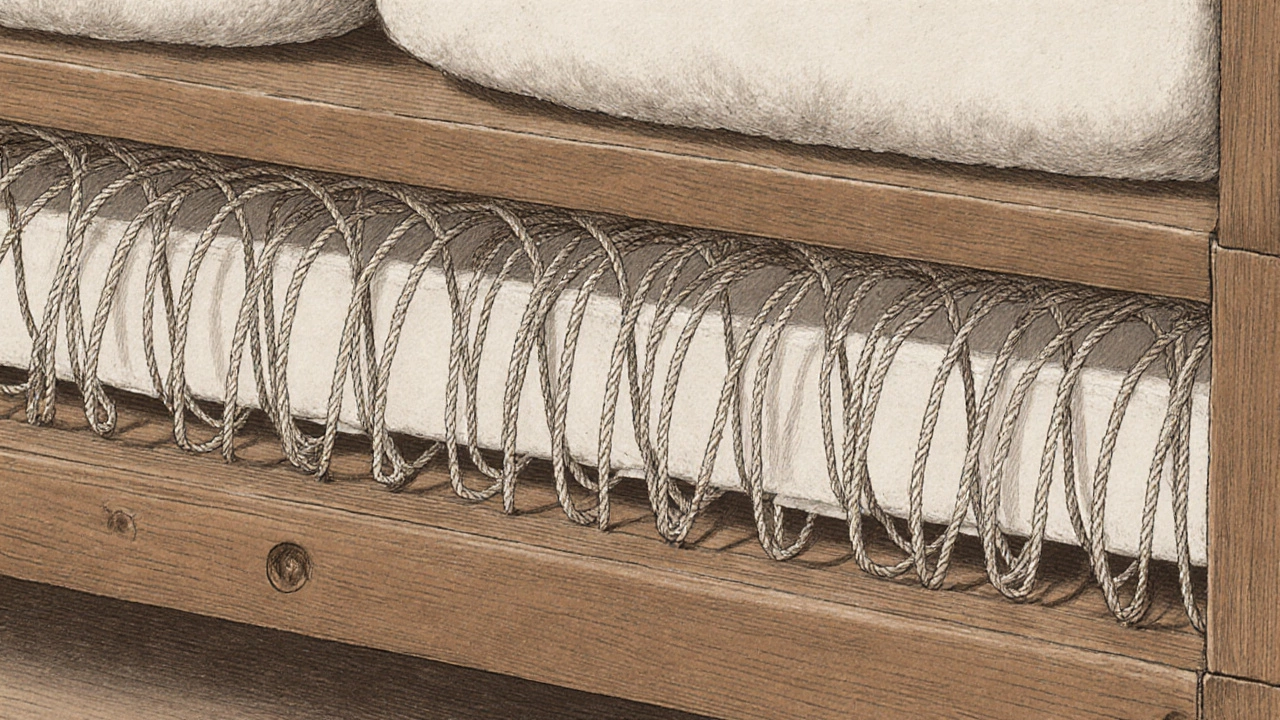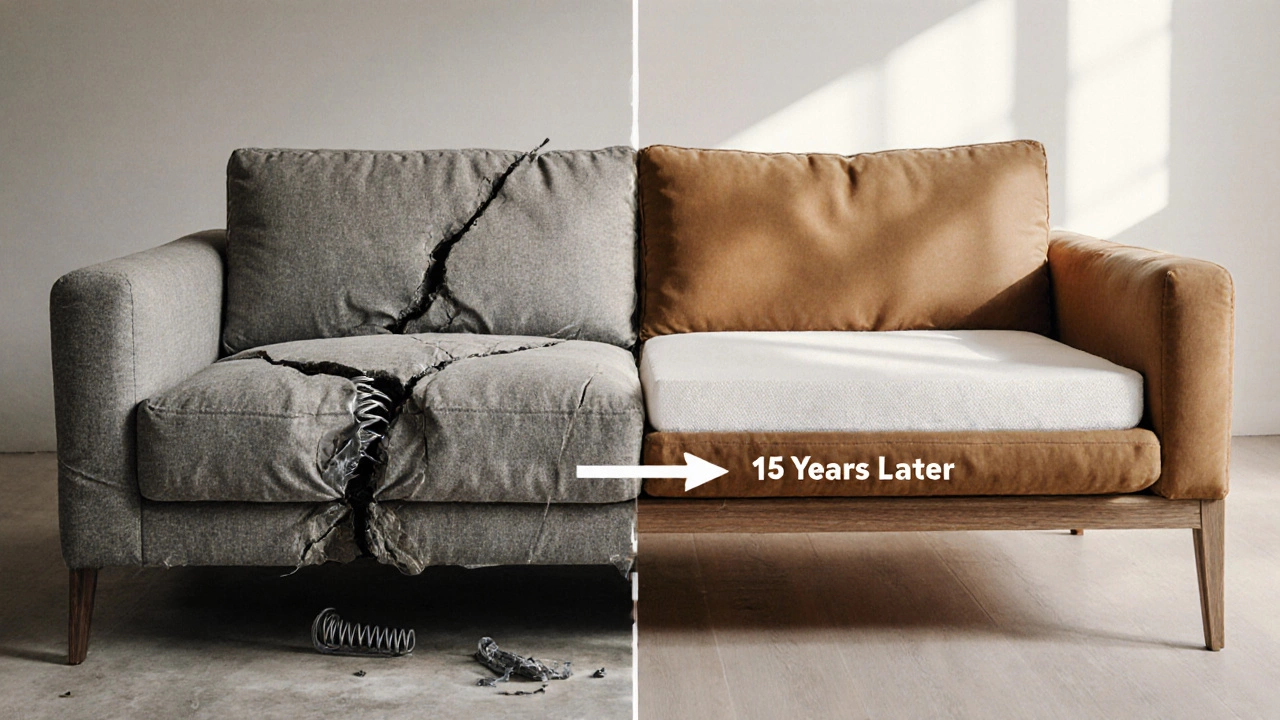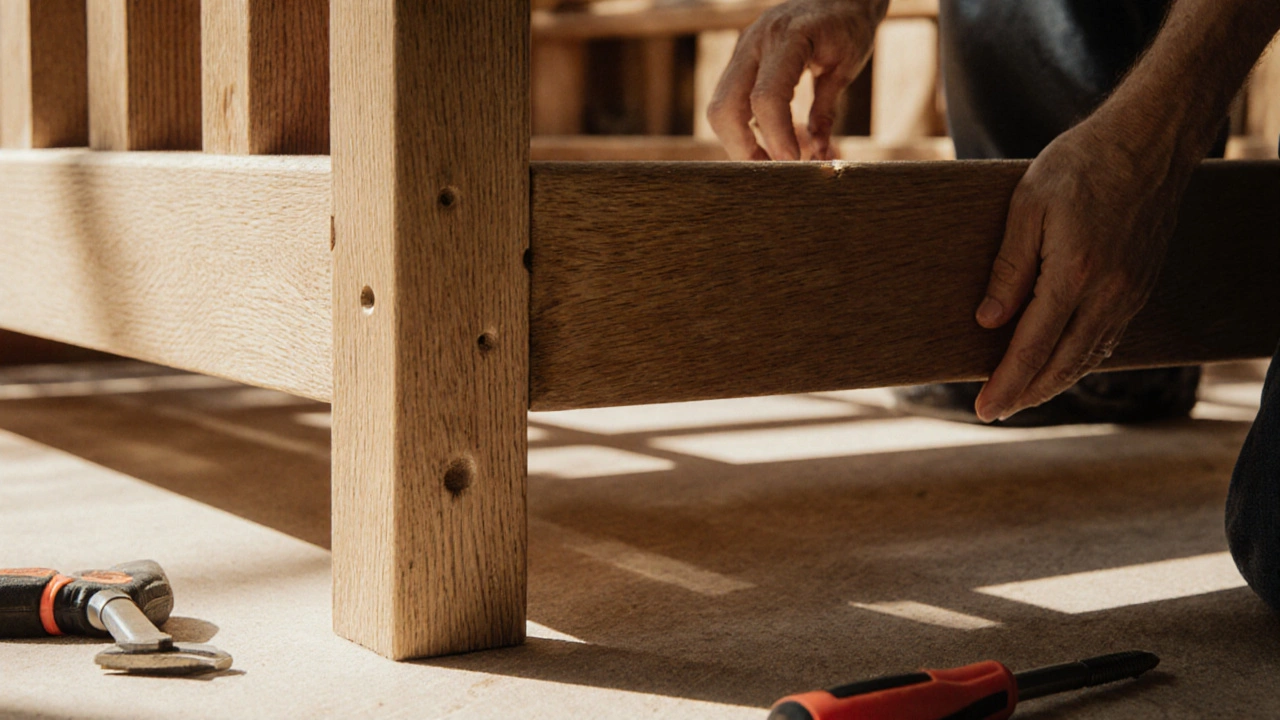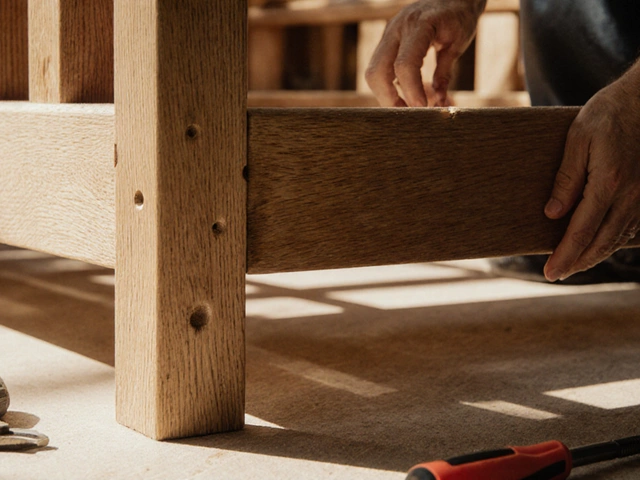Sofa Durability Calculator
Find out how long your sofa will last based on its construction. Use the calculator below to input key durability factors and get an estimated lifespan.
Sofa Construction Details
How It Works
Each factor contributes to the durability score. A score of 3-4 means it will likely last 5-10 years. 4-5 points suggests 10-15 years. 6+ points indicates a sofa that could last 20+ years.
Your Sofa Durability Assessment
This sofa is built with high-quality materials and should last for many years with proper care.
Most people buy a sofa thinking it’ll last five years. Then, after three, the cushions collapse, the arms wobble, and the fabric starts pilling. You’re not alone. But some sofas actually last 15, 20, even 25 years-and not because they’re expensive. It’s because they’re built right. If you want a sofa that doesn’t turn into a pile of fabric and springs by next winter, you need to know what actually holds up over time.
It’s Not the Fabric, It’s the Frame
You see ads for velvet sectionals and leather recliners like they’re the secret to longevity. But here’s the truth: the fabric is the easiest part to replace. The frame? That’s the skeleton. If it breaks, the whole thing is done.
Hardwood frames last. Not plywood. Not particleboard. Not glued laminates. Look for kiln-dried hardwood like oak, maple, or beech. These woods are dense, stable, and resist warping. Check the underside of the sofa-if you see bare wood with visible grain and no plastic or paper backing, you’re on the right track. Brands like Stickley, Hancock & Moore, and even some local New Zealand makers like Te Kākano is a New Zealand-based furniture maker using locally sourced hardwoods and traditional joinery techniques. use this method.
How do you know if the frame is solid? Lift one corner. If the whole sofa shifts or creaks, the joints are screwed or glued, not locked. A good frame uses double-dowel and corner-block construction. That means wooden blocks are glued and nailed into the corners to reinforce the joints. No metal brackets. No plastic clips. Real wood-to-wood connections. That’s what survives decades of Netflix marathons and kids jumping on it.
Spring Systems: The Unsung Hero
Most sofas use sinuous springs-those S-shaped metal wires running front to back. They’re cheap, easy to install, and okay for light use. But over time, they sag. You’ll notice it when you sit down and your hips sink lower than your knees. That’s not a design feature. That’s failure.
For real durability, look for eight-way hand-tied springs. Each spring is individually tied with cotton twine to the frame in a grid pattern. This system moves with your body, distributes weight evenly, and doesn’t collapse under pressure. It’s how sofas were made 100 years ago-and why vintage pieces still sit in living rooms today. Yes, it costs more. But a hand-tied spring system lasts 20+ years. Sinuous springs? Five to seven, max.
Don’t be fooled by marketing terms like "premium suspension" or "high-density support." Ask: Are the springs hand-tied? If the salesperson doesn’t know, they’re probably selling sinuous springs.
Cushion Foam: Density Matters More Than Thickness
Thick cushions don’t mean long-lasting cushions. I’ve seen 10-inch foam cushions turn to mush in two years because the foam was too soft. The magic number is 1.8 pounds per cubic foot (1.8 PCF) for the core foam. That’s the industry benchmark for durability. Anything below 1.5 PCF is for temporary use-like dorm rooms or rental furniture.
Higher-end sofas use a layered approach: 1.8 PCF high-resilience foam on the bottom, wrapped in a layer of down or polyester fiber for softness on top. That gives you the bounce of foam with the comfort of down, without the flatness. Avoid 100% down cushions. They look luxurious but flatten fast. You’ll be fluffing them daily by year three.
Memory foam? Skip it. It gets too hot, holds body impressions, and breaks down unevenly. Foam that rebounds quickly-that’s what you want. Test it yourself: press your hand into the cushion. If it takes more than two seconds to spring back, it’s too soft.

Fabric That Won’t Fall Apart
Leather gets all the attention, but not all leather lasts. Full-grain leather is the real deal. It’s the top layer of the hide, untreated and uncorrected. It ages beautifully, develops a patina, and resists tearing. Avoid bonded leather-it’s scraps glued together with plastic backing. It cracks in sunlight and peels off after a couple of years.
For fabric, look for high-performance textiles like Crypton, Sunbrella, or solution-dyed acrylics. These aren’t just stain-resistant-they’re fade-resistant, mold-resistant, and rated for 50,000+ double rubs (that’s the industry test for abrasion). A standard cotton blend? 15,000 double rubs. It’ll show wear in 18 months with daily use.
Here’s a simple trick: rub your thumb hard over the fabric. If you see white fibers or the color changes, it’s not durable. If it looks the same after a few seconds of pressure, you’re good. Also, avoid velvet unless it’s made of polyester or a synthetic blend. Natural velvet (like silk or cotton) looks amazing but crushes under pressure and stains easily.
What to Avoid at All Costs
There are three red flags that mean your sofa won’t last:
- Plastic or metal frame joints-if you see screws sticking out or plastic connectors, walk away.
- Thin, low-density foam-if the cushion feels like a beanbag, it’s not built to last.
- Unstitched seams-if the stitching looks loose or the edges are glued instead of sewn, the fabric will unravel.
Also, skip modular sofas with detachable sections unless they’re from a high-end brand. The connectors between pieces are weak points. Over time, they loosen, shift, or break. A single-piece frame stays stable.
Real-World Examples: What’s Actually Out There
In Auckland, I’ve seen three types of sofas that survive the test of time:
- Handmade hardwood frames with hand-tied springs-local artisans like Te Kākano is a New Zealand-based furniture maker using locally sourced hardwoods and traditional joinery techniques. build these. They cost $3,500-$6,000, but they’re heirloom pieces.
- European imports with high-density foam and performance fabric-brands like Moroso or Roche Bobois use Italian-made foam and Belgian textiles. They’re priced higher but come with 10-year warranties on structure.
- Secondhand mid-century modern-if you find a solid wood sofa from the 1960s or 70s, it’s likely built better than anything new under $2,000. Reupholster it, and you’ve got a 50-year-old sofa that still looks sharp.
Don’t be fooled by big-box store sales. A $1,200 sofa from a warehouse brand might look nice today, but it’s made for one rental cycle. You’ll be replacing it before your next home renovation.

How to Test a Sofa Before You Buy
Don’t just sit on it. Test it like you’re inspecting a car:
- Press down on the arms and back. If they move or flex, the frame is weak.
- Turn the sofa over. Look for kiln-dried hardwood, not plywood or MDF.
- Ask for the foam density. If they don’t know, it’s probably under 1.5 PCF.
- Check the stitching. It should be tight, even, and double-stitched at stress points.
- Ask about the spring system. If they say "no-sag" or "high-resilience," ask: "Is it hand-tied?" If they hesitate, it’s not.
Bring a friend. Have them sit on one side while you lift the other. If the whole thing tilts, the frame isn’t balanced. Good sofas stay level no matter how you sit.
Warranties: What Really Matters
A 10-year warranty sounds great. But read the fine print. Many warranties cover only the frame-not the cushions, springs, or fabric. Some exclude normal wear. Others require you to pay for shipping if something breaks.
The best warranties are from brands that stand behind their construction: Hancock & Moore is a U.S.-based furniture manufacturer known for handcrafted hardwood frames and hand-tied spring systems. offers a lifetime frame warranty. That’s rare. But if a company offers a 5-year warranty on the frame and 10 on the springs, that’s a good sign. Anything less? You’re buying a time bomb.
Final Verdict: What Lasts the Longest
Here’s the simple answer: the longest-lasting sofa has a kiln-dried hardwood frame, hand-tied springs, 1.8+ PCF foam, and performance fabric. That’s it. No magic. No marketing hype. Just solid materials and smart construction.
It’s not about price. It’s about how it’s made. You can find a $2,000 sofa that lasts 20 years if it’s built right. Or you can buy a $5,000 one that falls apart in five if it’s got plastic joints and soft foam.
If you want to avoid replacing your sofa every few years, invest in the frame. That’s where the real value is. Everything else-fabric, color, style-you can change later. The frame? That’s forever.
Is leather or fabric better for long-term sofa durability?
Full-grain leather lasts longer than most fabrics because it’s naturally strong and ages well. But high-performance fabrics like Crypton or Sunbrella can match or exceed leather’s durability, especially in homes with kids or pets. Leather needs conditioning every year. Fabric can be cleaned with water and mild soap. Both can last 20+ years if the underlying structure is solid.
Can I extend the life of my current sofa?
Yes. If the frame is still solid, reupholstering with performance fabric and replacing the foam cushions with 1.8+ PCF foam can add 10-15 years to its life. Replacing springs is harder but possible with a skilled upholsterer. Avoid re-stuffing with cheap polyester-use high-resilience foam or a foam-down blend.
Are IKEA or Wayfair sofas worth buying?
Most are not built for long-term use. IKEA sofas typically use particleboard frames, sinuous springs, and foam under 1.5 PCF. Wayfair varies-some higher-end models use better materials, but the majority are designed for short-term use. They’re fine for rentals or temporary spaces, but don’t expect them to last beyond five years with regular use.
Does the sofa’s weight matter for durability?
Yes. A heavy sofa usually means a solid frame. Lightweight sofas often use hollow metal or thin wood. Pick one up-if you struggle to move it, it’s likely built with real hardwood. A sofa under 100 pounds is almost always a sign of poor construction.
Should I buy a sofa with removable covers?
Only if the cover is made of performance fabric and the inner cushions are high-density foam. Removable covers are great for cleaning, but if the foam underneath is cheap, you’re just replacing the cover on a failing sofa. The cover is a bonus, not a fix.

